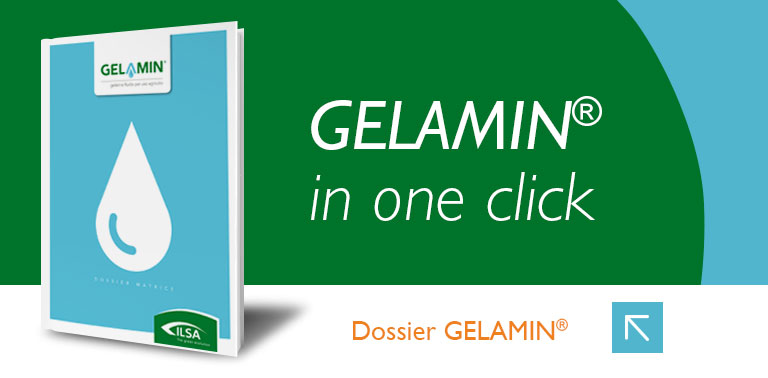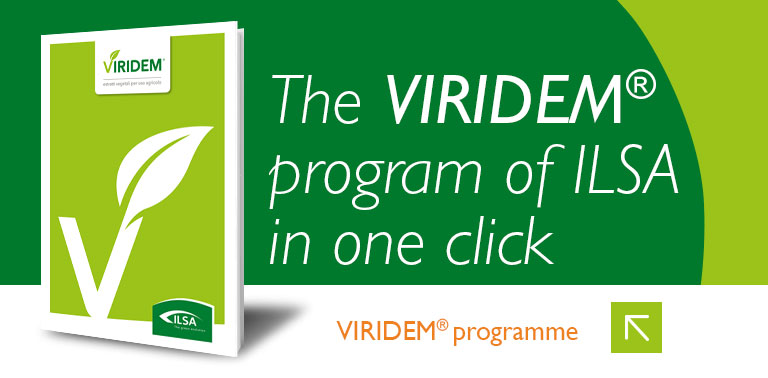PROMOTES PHOTOSYNTHESIS
Chlorophyll photosynthesis is a natural process that allows obtaining organic compounds from inorganic substances,by exploiting solar energy. The efficiency of photosynthesis depends on the nutrition and hydration state of planttissues, the presence of specific pigments and the activity of the enzymes involved in the stages (bright and dark) ofthe entire process. If only one of these conditions is missing, vegetative balance is reduced, which results in stuntedgrowth, leaf malformations, pale colour of vegetation and low metabolite production.
ILSALEVA allows a smooth progress of the photosynthesis process of vegetable crops (fruit, bulb, leaf, tuberand sprout crops), so enabling proper vegetative development, even in stress conditions, both in open field andin the greenhouse. The composition of ILSALEVA, based on natural triacontanol, specific amino acids (glycineand glutamic acid, fundamental for chlorophyll synthesis) - also non-protein-derived (gamma amino butyricacid) -, has been specifically designed to stimulate the photosynthesis of kitchen garden plants. The presence oftriacontanol, volatile compounds and other plant extracts with hormone-like action, moreover, allows ILSALEVA to stimulate the activity of the enzymes affecting primary metabolism (especially in the Krebs cycle) and promotecell expansion, which eventually results in increased development.
ILSALEVA is an essential tool for all vegetable crops, where environmental conditions can limit the photosynthetic efficiency of green tissues, vegetative development and, therefore, the final yield and quality.
Chemical and physical features
- LIQUID BROWN COLOUR
- pH 4,5 ± 0,5
- DENSITY 1,14 ± 0,02 kg/dm3
- CONDUCTIVITY E.C. 1,50 ± 0,20 dS/m
COMPOSITION
- Total Aminoacids 6 %
- Free Aminoacids 1,8 %
- Natural Triacontanol (mg/kg) 7
Contains in particular
- ENZYMATIC HYDROLYSATE OF FABACEAE
Characterising substances
- PLANT-DERIVED TRIACONTANOL, GLUTAMIC ACID, GLYCINE, GAMMA AMINOBUTYRIC ACID, BIOACTIVE PLANT EXTRACTS, VOLATILE COMPOUNDS
ACTIONS OF THE CHARACTERISING SUBSTANCES
| PHOTOSYNTHESIS EFFICIENCY | STIMULATION OF CELL EXPANSION | |
|---|---|---|
| PLANT-DERIVED TRIACONTANOL |

|

|
| PLANT-DERIVED AMINO ACIDS |

|
|
| PLANT EXTRACTS AND VOLATILE COMPOUNDS |

|

|
Doses and methods of use of the fertilizer
-
Leafy vegetables
-
Artichoke2-2,5 kg/ha2-4 applications every 8-10 days from 10 days after transplanting
-
Arugula2-2,5 kg/ha2-4 applications every 8-10 days from 10 days after transplanting
-
Basil2-2,5 kg/ha2-4 applications every 8-10 days from 10 days after transplanting
-
Beet2-2,5 kg/ha2-4 applications every 8-10 days from 10 days after transplanting
-
Chicory2-2,5 kg/ha2-4 applications every 8-10 days from 10 days after transplanting
-
Chicory2-2,5 kg/ha2-4 applications every 8-10 days from 10 days after transplanting
-
Endive2-2,5 kg/ha2-4 applications every 8-10 days from 10 days after transplanting
-
Lettuce2-2,5 kg/ha2-4 applications every 8-10 days from 10 days after transplanting
-
Parsley2-2,5 kg/ha2-4 applications every 8-10 days from 10 days after transplanting
-
Spinach2-2,5 kg/ha2-4 applications every 8-10 days from 10 days after transplanting
-
-
Legumes and potatoes
-
Potato2-2,5 kg/ha2-4 applications every 8-10 days from 10 days after transplanting
-
-
Vegetables
-
Asparagus1,5-2 kg/ha3-4 applications every 10-12 days from 10 days after transplanting
-
Brussels sprouts2-2,5 kg/ha2-4 applications every 8-10 days from 10 days after transplanting
-
Carrot2-2,5 kg/ha2-4 applications every 8-10 days from 10 days after transplanting
-
Cauliflower1,5-2 kg/ha3-4 applications every 10-12 days from 10 days after transplanting
-
Courgette1,5-2 kg/ha2-4 applications every 8-10 days from 10 days after transplanting
-
Cucumber / Gherkin1,5-2 kg/ha2-4 applications every 8-10 days from 10 days after transplanting
-
Eggplant1,5-2 kg/ha2-4 applications every 8-10 days from 10 days after transplanting
-
Fennel1,5-2 kg/ha3-4 applications every 10-12 days from 10 days after transplanting
-
Garlic / Scallion1,5-2 kg/ha3-4 applications every 10-12 days from 10 days after transplanting
-
Melon1,5-2 kg/ha2-4 applications every 8-10 days from 10 days after transplanting
-
Onion1,5-2 kg/ha3-4 applications every 10-12 days from 10 days after transplanting
-
Pepper1,5-2 kg/ha2-4 applications every 8-10 days from 10 days after transplanting
-
Savoy Cabbage2-2,5 kg/ha2-4 applications every 8-10 days from 10 days after transplanting
-
Spring Cabbage2-2,5 kg/ha2-4 applications every 8-10 days from 10 days after transplanting
-
Strawberry1,5-2 kg/ha2-4 applications every 8-10 days from 10 days after transplanting
-
Tomato1,5 - 2 kg/ha2-4 applications every 8-10 days from 10 days after transplanting
-
Tomato in greenhouse0,2-0,3 Kg/1.000 m22-4 applications every 8-10 days from 10 days after transplanting
-
Turnip Tops2-2,5 kg/ha2-4 applications every 8-10 days from 10 days after transplanting
-
Watermelon1,5-2 kg/ha2-4 applications every 8-10 days from 10 days after transplanting
-
The dose indicated in the table has been calculated by taking into account an irrigation volume of about 500-600 litres of water per application. The doses shown should be considered as merely indicative and may vary according to pedoclimatic conditions and average yields expected.










.png)
















